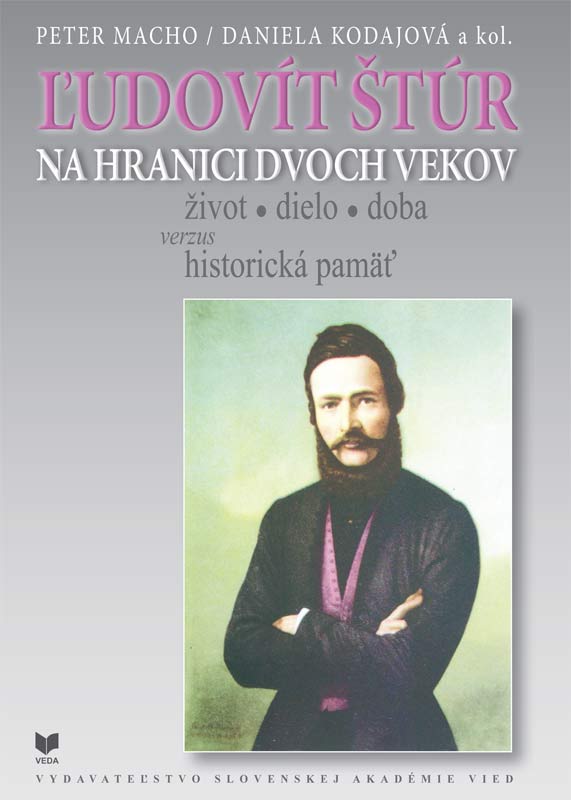
We kindly inform you that, as long as the subject affiliation of our 300.000+ articles is in progress, you might get unsufficient or no results on your third level or second level search. In this case, please broaden your search criteria.

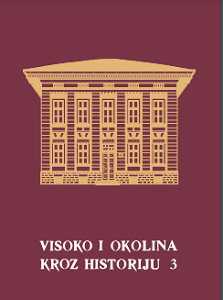
Dolaskom u Bosnu i Hercegovinu Austro-Ugarska Monarhija zatekla je potpuno različit obrazovni sistem koji je željela reformirati i uskladiti sa svojim državnim interesima i idejama. S ciljem uspješnog provođenja austrijske državne ideje na čijem čelu je stajao Benjamin Kállay, bilo je nužno izvršiti reformu školskog sistema koja će domaće višekonfesionalno društvo učiniti prijemčivijim za evropske vrijednosti s kraja 20. vijeka. Vješto iskorištavajući vjersku podvojenost bosanskohercegovačkog stanovništva u kojoj Kállay još 1877. godine vidi “najveću teškoću ali i najveću korist za okupatora”, vršena je postepena izgradnja novog sistema školstva u kojem su, pored novih vrsta škola (gimnazije, tehničke škole, trgovačke škole, djevojačke i zanatske škole), vršene zamjene uzora i na polju nastavnih planova, školskih udžbenika i općenito orijentacije prosvjetne politike. U nastavno-obrazovnim koncepcijama nove vlasti škola je bila prva linija odbrane od raspirivanja nacionalnih pokreta te sredstvo vaspitanja novih generacija kojima se nameće kult cara i Habsburške Monarhije. Nacionalne grupe predmeta lišene su bilo kakvog sadržaja sa nacionalnim pretenzijama, a u upotrebi su bili udžbenici koje je strogo kontrolisala i odobravala Zemaljska vlada. Bilo kakav oblik udruživanja s ciljem političke akcije bio je strogo zabranjen, a važan faktor kontrole bio je učiteljski kadar koji je tokom prve polovine austrougarske vlasti u BiH dolazio uglavnom iz drugih dijelova Monarhije.
More...
Povjesničarima dobro poznati putopis Heinricha Rennera Herceg-Bosnom uzduž i poprijeko1 Clemens Ruthner čita u ključu romantične naracije o uspavanoj ljepotici Bosni i Hercegovini koju je svojom vladavinom otrovalo Osmansko Carstvo, a koju će čarobnim poljupcem probuditi evropski spasitelj, tačnije Habsburška Monarhija. 2 Ovako opisana austrougarska civilizatorska misija, proklamirana u vrijeme okupacije 1878. godine, tako podsjeća na patrijarhalni model djelovanja u kojem slabašnu djevojku (Bosnu i Hercegovinu) spašava hrabar i naočit muškarac ‒ Austro-Ugarska. Na taj način stvarna austrougarska okupacija i kolonizacija Bosne i Hercegovine podsjeća djelomično na simbolično koloniziranje ženskog tijela od muške dominantne kulture koje je sistemski provođeno od ranog novog vijeka i pojave protokapitalizma. Povjesničarima dobro poznati putopis Heinricha Rennera Herceg-Bosnom uzduž i poprijeko Clemens Ruthner čita u ključu romantične naracije o uspavanoj ljepotici Bosni i Hercegovini koju je svojom vladavinom otrovalo Osmansko Carstvo, a koju će čarobnim poljupcem probuditi evropski spasitelj, tačnije Habsburška Monarhija. Ovako opisana austrougarska civilizatorska misija, proklamirana u vrijeme okupacije 1878. godine, tako podsjeća na patrijarhalni model djelovanja u kojem slabašnu djevojku (Bosnu i Hercegovinu) spašava hrabar i naočit muškarac ‒ Austro-Ugarska. Na taj način stvarna austrougarska okupacija i kolonizacija Bosne i Hercegovine podsjeća djelomično na simbolično koloniziranje ženskog tijela od muške dominantne kulture koje je sistemski provođeno od ranog novog vijeka i pojave protokapitalizma.
More...
The topic of the persecution and emancipation of the Jews opens up a range of interesting issues – from the adoption of a general policy of disciplining subjects through to an exploration of personal identities in the pre-modern era. In less than a century, the status of the Jewish population of the Bohemian lands had changed beyond recognition. Whereas in the 18th century they were still only a tolerated section of society, sometimes at risk of fatal persecution, by the end of that century they were gradually able to participate in the economic life of the Habsburg Monarchy, and after the middle of the following century they had finally gained full civil rights. This paper outlines the relationship of the central and local authorities towards the Jewish population of the Bohemian lands by focusing on the official agenda of the royal mining town of Horní Slavkov. Extant sources – such as the town’s correspondence with Jewish communities and individuals, or the town’s criminal law agenda – provide insights about the legal practices of the day and enable us to highlight the problems associated with enforcement of the legislation restricting the right of residence for Jews in mining towns.
More...
The town of Staňkov (Stankau) is located 20 kilometres north-east of Domažlice in South Bohemia. After the relaxation of discriminatory laws in 1848, Jews began to move to large urban areas, gradually leaving the small rural settlements, such as Staňkov. Around the middle of the 19th century, a large number of Jewish families moved to Staňkov, which at the time comprised two parts. After the turn of the 20th century, some of them began to relocate to large towns. Right up until the 1930s, there were still members of a few Jewish families living in Staňkov, namely the Bloch, Kohn, Lederer, Wilhelm, and Weil (Bruml and Schwarz) families. These families had a similar life experience. In the middle of the 19th century, some of their relatives moved to Staňkov, where they began to prosper both socially and economically. Few, however, had the foresight to leave the country by the end of the 1930s; some tried, but it was too late by then. In November 1942, they were deported to the Terezín/Theresienstadt ghetto. Later, they were sent on to concentration and extermination camps in the East. Most of the members of these families perished, apart from a few individuals who managed to survive the war. Alžběta (Elisabeth) Ledererová returned to Staňkov from the Mauthausen camp. The Wilhelm siblings Otto, Helena and Aloisie (Louisa) Wilhelm survived the war abroad.
More...
This biographical study presents amicro-portrait of Joachim Deutschmann. He served in various rabbinic positions in Bohemia and Moravia at a time of dramatic social change in the Habsburg Monarchy at the turn of the 18th and 19th centuries. He not only gained a reputation within traditional rabbinic circles, but also enjoyed extraordinary respect among the younger generation of representatives of the Jewish Reform movement in Bohemia, Moravia, and Hungary. Although he left no comprehensive work, his homiletic sermons in Hebrew were preserved in manuscript copies by students who attended his private yeshivot in Hořice (Horschitz), Jevíčko (Gewitsch), Třebíč (Trebitsch), and Kolín, where he served as rabbi.
More...
Bernard Schütz was born in 1878, the son of Jakob Schütz, a butcher in Lukavec (Lukawetz) near Pacov (Patzau), a small town with a strong Jewish community. In 1901, after learning the gingerbread-making trade and apprenticing as a journeyman, he became a self-employed baker in Jindřichův Hradec (Neuhaus). In 1903, after marrying Emilia Löwy from Vysoká Pec near Příbram, he moved to Pardubice (Pardubitz), where he opened a bakery specializing in matzah products and later founded the Mellekta gingerbread company, which became noted for its honey-marzipan gingerbread and chocolate toppings. On 7 May 1942, Bernard Schütz and his wife were deported to the Terezín/Theresienstadt ghetto, where he ran the bakery until May 1945. Unlike most of their family, they both survived the Holocaust. After the war, Bernard Schütz became chairman of the restored Jewish religious community in Pardubice. He died in Mariánské Lázně (Marienbad) on 18 August 1958.
More...
The abolition of the Jewish tax in October 1848 and the equalization of Jews by the constitution of March 4, 1849, posed significant financial challenges for Jewish communities in Bohemia. The search for a solution spanned over four decades, with Prague quickly resolving the issue through ad hoc measures, while rural communities struggled. Efforts to legally secure funding for rural Jewish communities failed in the early 1850s, as only the Prague Jewish community had the status to enforce contributions. The Czech governorship's attempts to reform Jewish communities were met with resistance, leading to a prolonged period of legal and financial uncertainty. The situation was further complicated by the lack of clear criteria for determining the status of Jewish religious communities. Despite various proposals and negotiations, a comprehensive legal framework was not established until the late 19th century. The eventual issuance of a law in 1890 brought some order to the chaotic situation, but challenges persisted in implementing and enforcing the new regulations.
More...
The organization of Jewish religious communities in the Czech lands between the two world wars faced numerous challenges, as detailed in the extensive archival materials preserved in the Jewish Museum in Prague. The 1890 law established Jewish religious communities as public territorial corporations, mandating the collection of a religious tax to cover community needs. Despite the autonomy granted by the law, the communities struggled with issues such as appointing and maintaining rabbis, and the lack of broader organizations to coordinate inter-community relations. Efforts to create a unified organization culminated in the formation of regional unions and the Supreme Council of Jewish Religious Communities in 1927. These unions aimed to manage common affairs, represent Jewish interests to state authorities, and ensure the preservation of Jewish heritage. The Supreme Council also focused on social care, education, and the protection of historical and artistic Jewish artifacts. The study highlights the resilience and adaptability of Jewish communities in navigating legal and financial uncertainties, emphasizing the importance of preserving their history for future generations.
More...
Otto Weissberger, a prominent industrialist born in 1864, significantly influenced Pilsen's society through his business acumen and social contributions. Despite facing anti-Semitic sentiments, he established a successful factory producing bronze and graphic colors, which became a European leader. Weissberger was deeply involved in various professional and social organizations, advocating for industrial and social progress. His life took a tragic turn during World War II when he and his family were persecuted by the Nazis. Weissberger died in Terezín in 1944, while his wife survived the war but faced post-war challenges. His daughters, Eliška and Anna, were executed for their resistance activities. The family's legacy is preserved through detailed archival research, highlighting their resilience and contributions to Pilsen's history. This study underscores the importance of documenting and preserving the history of Jewish families in Bohemia.
More...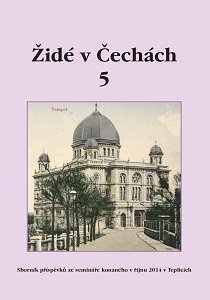
The Jewish cemetery in Teplice, has been established in 1862 and still in use until today. It details the existence of two older cemeteries in the town, with the first dating back to the late 15th century and located southeast of the town walls. The second cemetery, known as the "old cemetery," was used from 1669 until its closure in 1862 due to capacity issues and urban expansion. The document highlights the destruction of these cemeteries during the Nazi occupation, with many gravestones repurposed or lost. The current cemetery, part of a multi-denominational municipal cemetery, features a variety of gravestones, including traditional Jewish symbols and influences from classicism and Art Nouveau. The text emphasizes the importance of preserving this historical site, which contains over three thousand gravestones and serves as a significant cultural monument in the region.
More...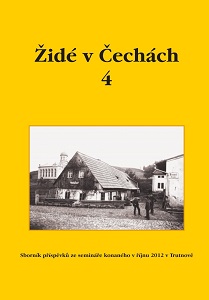
The document explores the history of the Jewish religious community in Trutnov, focusing on the construction and fate of the Trutnov synagogue. It highlights the contributions of notable architects like Konrad Kühn and Johann Blažek, who designed the synagogue and other significant buildings in the region. The text details the establishment of the synagogue in 1885, its architectural features, and the community's efforts to maintain it. It also covers the tragic events of Kristallnacht in 1938, which led to the synagogue's destruction. The document includes information on the Jewish population's economic activities and the impact of Nazi occupation during World War II. It concludes with reflections on the preservation of Jewish heritage and the challenges faced in documenting the community's history due to the loss of many original records.
More...
The document details the history of the Jewish settlement in Bezdružice, starting from 1694. It highlights the establishment of the Jewish community and cemetery in the mid-18th century, noting the preservation of several original Jewish houses despite modern renovations. The synagogue, built in 1812 in a classicist style, was destroyed by the Nazis in 1938 but remains a cultural monument. The cemetery, once neglected, underwent extensive restoration between 2011 and 2012, revealing 185 gravestones, including the oldest from 1762. The document also discusses the discovery of Jewish gravestones used as construction material in the 20th century and their subsequent return to the cemetery. It emphasizes the unique architectural and epigraphic features of the gravestones, such as plant motifs and the use of matronymics. The restoration efforts were supported by German volunteers and local organizations, highlighting the collaborative nature of the project.
More...
The document examines the role of Jewish entrepreneurs in the linen industry in the Trutnov region during the 19th and early 20th centuries. It highlights the establishment of the first mechanical flax spinning mill in 1836 by Johann Faltis and the subsequent involvement of Jewish businessmen like Filip Morawetz, Jakob Oberländer, and Leopold Abeles. The text details the expansion of the industry, including the founding of additional mills and weaving factories by Jewish entrepreneurs such as the Buxbaum brothers and Josef Pfefferkorn. It also discusses the impact of World War I and the economic crisis of the 1920s and 1930s on the industry. The document covers the Nazi occupation, the confiscation of Jewish-owned businesses, and the tragic fate of many Jewish entrepreneurs during the Holocaust. Post-war, it notes the nationalization of the textile industry and the challenges faced by surviving Jewish business owners in reclaiming their property.
More...
The document details the history of the Jewish settlement in Chrast and its surroundings from the late 18th century, following the issuance of the Toleration Patent by Joseph II. It highlights the significant Jewish families, such as the Heisler family, who were prominent in various industries and became major employers in the region. The Heisler family established several factories, including a paper tip factory for cigars and cigarettes, a chemical factory producing pharmaceuticals, and a factory processing human hair. The document also covers the impact of World War II, including the confiscation of Jewish-owned businesses and the tragic fate of many Jewish residents during the Holocaust. Post-war, the document notes the nationalization of industries and the challenges faced by surviving Jewish business owners in reclaiming their property. The narrative concludes with reflections on the lasting impact of the Jewish community on the industrial and cultural development of Chrast.
More...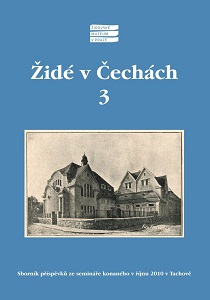
The Jewish population in Český Krumlov faced significant challenges and changes from the 14th century to the 20th century. Initially, Jews were allowed to settle in the area by royal decree, but they faced expulsion and restrictions in the late 15th century. It wasn't until the mid-19th century that Jewish families began to resettle in the town, contributing to its social and economic life. Prominent families like the Spiros played a crucial role in the local industry, particularly in papermaking. The Jewish community established a synagogue and a cemetery, and their children attended local schools. Despite their integration, the community faced growing antisemitism in the early 20th century, culminating in the Nazi occupation. During this period, Jewish properties were confiscated, and many community members were deported or fled. The synagogue was destroyed, and the Jewish population in Český Krumlov never fully recovered after World War II. The history of the Jewish community in Český Krumlov is a testament to their resilience and contributions despite facing severe persecution.
More...
The Zikmund Feldmann shoe factory in Kolín, founded from a modest shoemaking workshop, thrived in the early 20th century as one of the progressive shoe factories in Bohemia. The business, involving multiple family members, faced intense competition during the Great Depression. Initially a small workshop established by Leopold Feldmann in 1857, it expanded under his son Zikmund, who modernized the factory with new machinery and increased production. The factory produced a variety of shoes, including luxury items, and exported to several countries. Despite its success, the factory struggled during the economic crisis and eventually closed. The factory building still stands today, repurposed as a hostel. The Feldmann family, including notable figures like Otto Reich, faced significant challenges during the Nazi occupation, with many members deported and killed. The history of the Feldmann shoe factory reflects the broader economic and social changes in the region, as well as the resilience of the family through adversity.
More...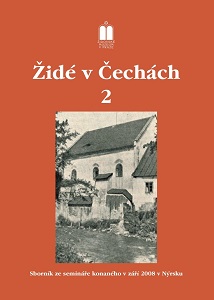
Klara Fischer-Pollak, a Jewish doctor from Karlovy Vary, faced numerous hardships during and after World War II. Her life story reflects the suffering of Jews and mixed families during the Nazi occupation and the complex Czech-German relations post-1945. Despite being a capable and dedicated physician, she struggled with legal and social challenges due to her German nationality and Jewish heritage. After the war, she was nationalized and faced significant difficulties in reclaiming her property and resuming her medical practice. Her health deteriorated due to the physical and emotional toll of her experiences. Eventually, she emigrated to Bavaria, where she continued to face challenges but managed to rebuild her life and career. Klara's story is a poignant example of resilience and the struggle for recognition and stability in the aftermath of the Holocaust.
More...
Interest in the study of Jewish history and culture in northwestern Bohemia has grown since the late 1980s, leading to numerous publications and online resources. The region's Jewish cemeteries, often neglected and damaged by Nazi and communist regimes, have become a focal point of research. The Jewish communities in areas like Teplice, Ústí nad Labem, and Litomìøice have left behind significant historical records, including cemetery inscriptions and community documents. Efforts to preserve these sites have increased, with many cemeteries undergoing restoration funded by the European Union and local authorities. The Teplice Jewish community, once the second largest in Bohemia, has a rich history documented through various sources. The Ústí nad Labem cemetery, established in 1866, faced significant damage during and after World War II. In Litomìøice, the Jewish cemetery dates back to the 16th century, with many historical tombstones still present. The preservation and study of these cemeteries provide valuable insights into the Jewish heritage of the region. Local organizations and volunteers play a crucial role in these restoration efforts. The ongoing research and preservation work aim to honor and remember the Jewish communities that once thrived in northwestern Bohemia.
More...
This study investigates the history and contributions of Jewish entrepreneurs and exporters in the glass and jewelry industry in Jablonec nad Nisou from the 18th century onwards. It highlights the involvement of Jewish traders in the production and export of glassware and jewelry, their establishment of businesses, and their adaptation to local conditions. The text also discusses the challenges faced by Jewish entrepreneurs, including legal and social constraints, and their efforts to integrate into the local economy. The document provides examples of prominent Jewish businesses and their impact on the regional economy, as well as the role of Jewish community leaders in supporting economic development. Additionally, it examines the influence of historical events, such as the liberalization of the Habsburg monarchy and the rise of antisemitism, on the Jewish business community. The study concludes with a reflection on the legacy of Jewish entrepreneurs in the region and the importance of preserving their contributions to the local industry.
More...